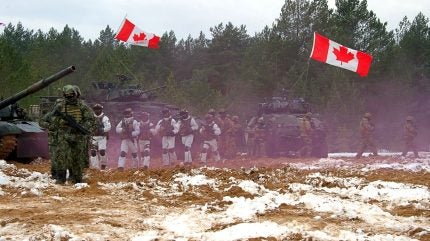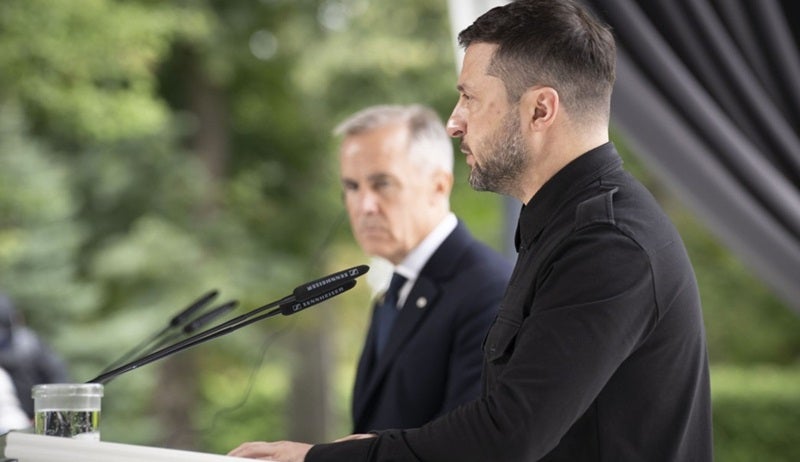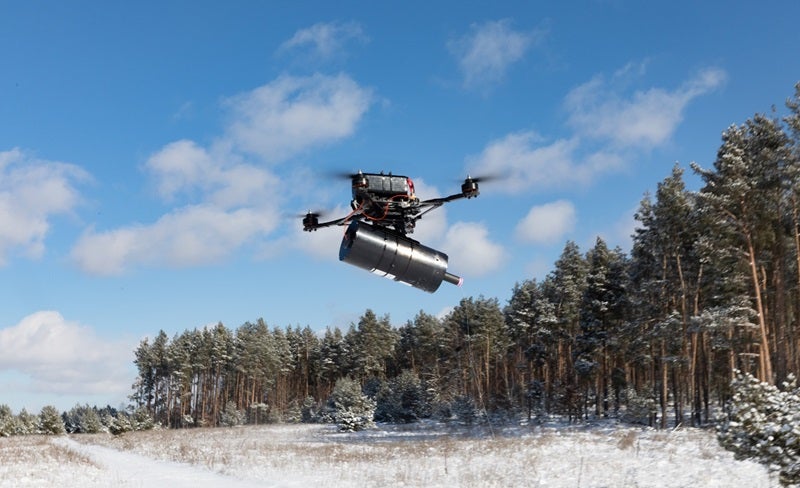Zelenskyy urges Canada to send troops to Ukraine

Ukrainian President Volodymyr Zelenskyy called on Canada to reinforce European security guarantees for the war torn country by sending troops to Ukraine.
“We are counting on the presence of Canadian forces in Ukraine,” beseeched the wartime leader, “this is important for us,” he emphasised in a joint press conference in Kyiv alongside the Canadian Prime Minister Mark Carney on 24 August 2025.
This prospect builds on recent commitments from European leaders, particularly the British Prime Minister Keir Starmer, who floated the notion of sending a force presence to secure Ukraine’s territorial integrity after a prospective peace deal.
It is not certain what this potential force presence would look like but it is certain that the British Army will be unable to undertake a high-intensity conflict in the conventional sense. This leaves the guarantor with little option other than a peacekeeping mission similar to its deployment in Kosovo during the late-1990s.

No doubt aware of the limited deterrence of this solution against Russia, a hardened peer adversary, Zelenskyy understandably wants to bolster the combined Nato presence on the border with Russia. The president took the opportunity to discuss this move with Carney during his visit to Kyiv last week to iron out details of a new security cooperation deal.
This deal is the latest bilateral arrangement with Ukraine – others include Denmark, Sweden and the UK – in which countries are tapping into Ukraine’s battlefield experience and industrial innovation.
While the Canadian government has not offered any response to the prospect of inserting troops on the ground in Ukraine, according to Zelenksyy’s office Canada is considering the possibility.

Canadian strategy
In Canada’s strategic assessment, enshrined in Our North, Strong and Free, the Nato member does not underestimate the wider, strategic threat posed by Russian forces. The adversary’s reach is not limited to the regional conflict in Ukraine but also across Europe and in their own sphere of influence in the Arctic region.
To that end, the Ministry of National Defence (MND) has increased defence spending by C$9bn ($6.5bn) for fiscal year 2025-26. But in a more sobering context, Canada currently spends just 1.37% of its gross domestic product on defence with an ambition to reach 2%, Nato’s old baseline target, by 2032.
These funds will focus on increasing the number of personnel in a combined force of 71,500 troops by 2030, new military infrastructure and capabilities with a focus on the High North.
GlobalData, a leading data and analytics consultancy, list the major projects contributing to this increased spending, such as the procurement of 88 F-35A multirole fighters, the construction of a new fleet of multi-purpose frigates to replace ageing warships, Arctic and Offshore Patrol Ships (AOPS), new ice-breaking patrol vessels for both the Navy and Coast Guard, and an ongoing search for an optionally armed Remotely Piloted Aircraft System.
In this spirit, during Carney’s visit to Kyiv, the Royal Canadian Navy inducted its sixth and final AOPS.
What can Canada provide?
This strategic context leaves Canadian officials with tough decisions when it comes to allocating units to the appropriate theatres. But with substantial work ongoing in the naval industry for the High North, it would be more suitable to provide Ukraine with troops and capabilities on the ground and in the air.
Canada has contributed to deployments in Afghanistan, Syria, and Libya in the past and regularly rotates troops into the Baltics for deterrence and air policing.
In fact, as the framework nation for the Enhanced Forward Presence (EFP) battlegroup in Latvia, Canada plans to increase the number of permanently deployed troops in Latvia to 2,200 through 2026. Should the government decide to send troops to Ukraine, it may be that Canada would divert this number to Ukraine after any potential peace process.

When it comes to air capabilities, meanwhile, the Canadian Armed Forces could feasibly send its pilots to fly ageing CF-18 multirole fighter jets while the Air Force waits to replenish this legacy fleet with its forthcoming F-35As from 2026. At present, Canada is investing C$6.38bn to increase the number of short and medium range missiles for both aircraft.
This solution would provide a highly manoeuvrable fighter jet for dogfights on the Russian border, which goes hand in hand with the data fusion and stealth that the F-35 platform provides. However, it must be understood that the Canadian Air Force inducted 76 units throughout the 1980s and another 18 units between 2019 and 2021, according to GlobalData intelligence.


